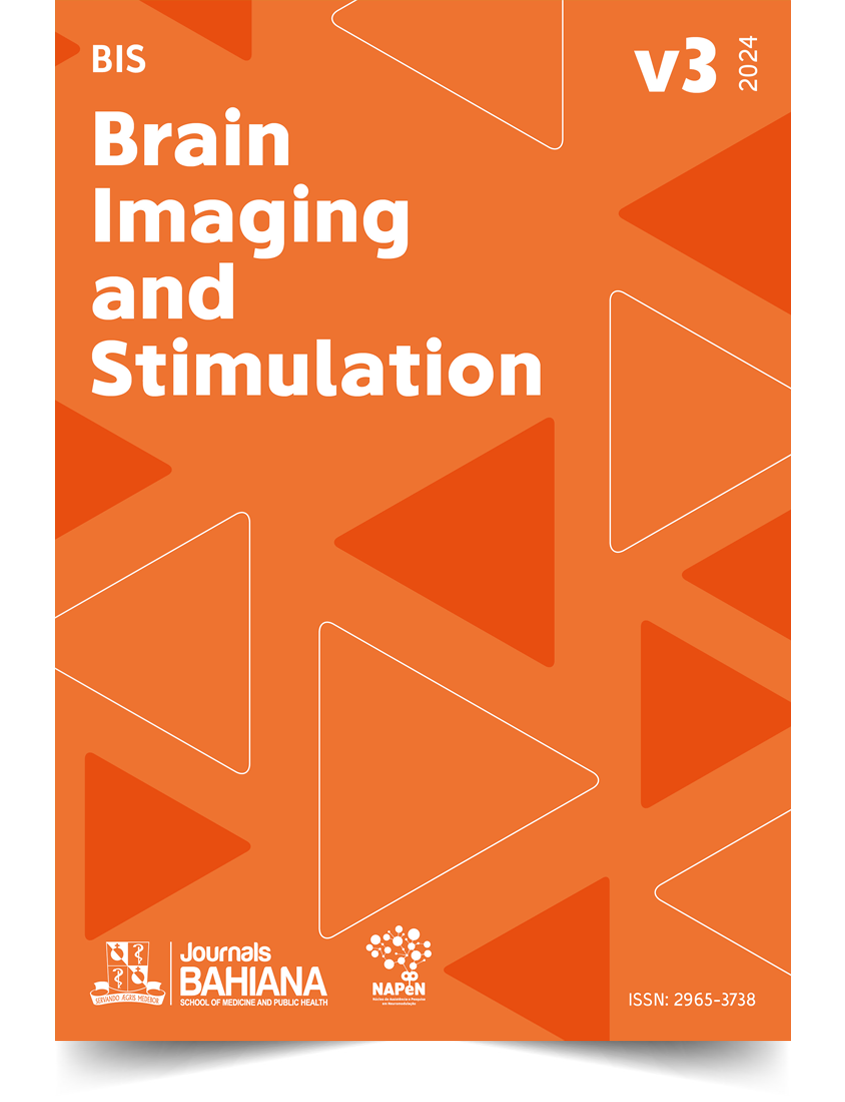Practical video demonstration of the technique to identify the posterior superior insula orthogonal scalp projection without neuronavigation: the Fast-PSI
DOI:
https://doi.org/10.17267/2965-3738bis.2024.e5640Keywords:
Insula, Neuronavigation, Transcranial Magnetic Stimulation, Frameless Neuronavigation, Euclidean Distance, Craniometry, Fiducial PointsAbstract
BACKGROUND: The posterior-superior insula (PSI) has emerged as a potential target for non-invasive brain stimulation (NIBS) in the treatment of peripheral neuropathic pain. However, current methods for identifying the PSI require expensive and time-consuming brain imaging and neuronavigation. Here, we propose the Fast-PSI method, a novel approach based on craniometry and intracranial Euclidean distances proportions comparisons between scalp landmarks, to swiftly and accurately locate the PSI projection on the scalp. METHODS: Eleven healthy participants underwent identification of the PSI and cranial landmarks (CL) MNI152 coordinates using neuronavigation. Euclidean distances between nasion and PSI (N-sPSI), nasion and inion (N-I), vertex and PSI (Cz-sPSI), and vertex and tragus (Cz-T) were calculated. Craniometric-based Euclidean distances between PSI and CL were also measured. Correction factors were developed based on the proportionality of distances. RESULTS: Mean distances’ proportions were consistent between stereotactic-based and craniometric-based measurements. Correction factors were determined as 0.67 for N-sPSI and 0.75 for Cz-sPSI. The Fast-PSI formula was established using these factors to swiftly locate the PSI projection on the scalp. Test-retest, intra- and inter-rater reliability coefficients were high, with no statistical difference compared to neuronavigated coordinates. The mean time for Fast-PSI determination was significantly shorter than traditional neuronavigation. CONCLUSION: The Fast-PSI method demonstrates high precision and reliability in identifying the PSI projection for NIBS in neuropathic pain treatment. Its rapid execution and accuracy make it a promising alternative to current techniques, potentially reducing time and resource burdens associated with neuronavigation. Further validation in clinical trials and everyday practice is warranted to assess its utility in clinical settings.
Downloads
References
(1) Dongyang L, Fernandes AM, Cunha PHM, Tibes R, Sato J, Listik C, et al. Posterior-superior insular deep transcranial magnetic stimulation alleviates peripheral neuropathic pain — A pilot double-blind, randomized cross-over study. Neurophysiol. 2021;51(4):291–302. https://doi.org/10.1016/j.neucli.2021.06.003
(2) Andrade DC, Galhardoni R, Pinto LF, Lancelotti R, Rosi J, Marcolin MA, Teixeira MJ. Into the Island: A new technique of non-invasive cortical stimulation of the insula. Neurophysiol Clin Neurophysiol. 2012;42(6):363–8. https://doi.org/10.1016/j.neucli.2012.08.003
(3) Manolis E, Filippou D, Theocharis S, Panagiotaropoulos T, Lappas D, Mompheratou E. Anatomical landmarks: Dimensions of the mastoid air cell system in the Mediterranean population. Our experience from the anatomy of 298 temporal bones. Anat Sci Int. 2007;82:139–46. https://doi.org/10.1111/j.1447-073X.2007.00175.x
(4) Yu K, Wang X, Li Q, Zhang X, Li X, Li S. Individual Morphological Brain Network Construction Based on Multivariate Euclidean Distances Between Brain Regions. Front Hum Neurosci. 2018;12(204):1–13. https://doi.org/10.3389/fnhum.2018.00204
(5) Faillenot I, Heckemann RA, Frot M, Hammers A. Macroanatomy and 3D probabilistic atlas of the human insula. NeuroImage. 2017;150:88–98. https://doi.org/10.1016/j.neuroimage.2017.01.073
(6) Beam W, Borckardt JJ, Reeves ST, George MS. An efficient and accurate new method for locating the F3 position for prefrontal TMS applications. Brain Stimulat. 2009;2(1):50–4. https://doi.org/10.1016/j.brs.2008.09.006
(7) Cunha PHM, Tanaka H, Lapa JDS, Dongyang L, Boa Sorte AA, Pereira TMR, et al. The fast-posterior superior insula (Fast-PSI): A neuronavigation-free targeting method for non-invasive neuromodulation. Brain Stimulat. 2022;15(5):1178–80. https://doi.org/10.1016/j.brs.2022.08.009
Downloads
Published
Issue
Section
License
Copyright (c) 2024 Pedro Henrique Martins da Cunha, Harki Tanaka, Jorge Dornellys da Silva Lapa, Liu Dongyang, Ana Mércia Fernandes, Anselmo Alves Boa Sorte Júnior, Tamara Maria Ribeiro Pereira, Felipe Henriques Carvalho Soares, Gabriel Taricani Kubota, Valquíria Aparecida da Silva, Thomas Graven-Nielsen, Manoel Jacobsen Teixeira, Daniel Ciampi de Andrade

This work is licensed under a Creative Commons Attribution 4.0 International License.
This work is licensed under a Creative Commons Attribution 4.0 International License.



